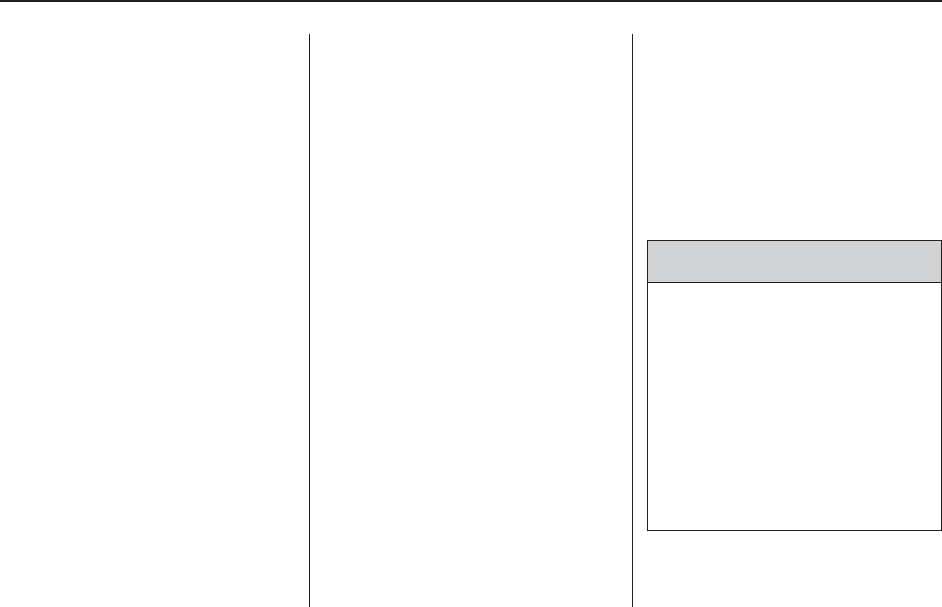
Hitches
It is important to have the correct
hitch equipment. Crosswinds,
large trucks going by and rough
roads are a few reasons why
the right hitch is needed.
• The rear bumper on the vehicle is
not intended for hitches. Do not
attach rental hitches or other
bumper-type hitches to it. Use
only a frame-mounted hitch that
does not attach to the bumper.
• Will any holes be made in the
body of the vehicle when the
trailer hitch is installed? If so,
be sure to seal the holes when
the hitch is removed. If they are
not sealed, deadly carbon
monoxide (CO) from the engine’s
exhaust can get into the vehicle.
See Engine Exhaust on
page 2-28. Sealing the holes will
also prevent dirt and water from
entering the vehicle.
Safety Chains
Always attach chains between the
vehicle and the trailer. Cross the
safety chains under the tongue of
the trailer to help prevent the tongue
from contacting the road if it
becomes separated from the hitch.
Instructions about safety chains
may be provided by the hitch
manufacturer or by the trailer
manufacturer. Follow the
manufacturer’s recommendation
for attaching safety chains and do
not attach them to the bumper.
Always leave just enough slack so
the rig can turn. Never allow safety
chains to drag on the ground.
Trailer Brakes
A loaded trailer that weighs more
than 1,000 lbs (450 kg) needs to
have its own brake system that is
adequate for the weight of the trailer.
Be sure to read and follow the
instructions for the trailer brakes so
they are installed, adjusted and
maintained properly. Because the
vehicle has StabiliTrak
®
, do not try
to tap into the vehicle’s hydraulic
brake system. If you do, both brake
systems will not work well, or at all.
Driving with a Trailer
{ CAUTION
When towing a trailer, exhaust
gases may collect at the rear
of the vehicle and enter if the
liftgate, trunk/hatch, or rear-most
window is open.
Engine exhaust contains carbon
monoxide (CO) which cannot be
seen or smelled. It can cause
unconsciousness and even death.
(Continued)
4-40 Driving Your Vehicle


















